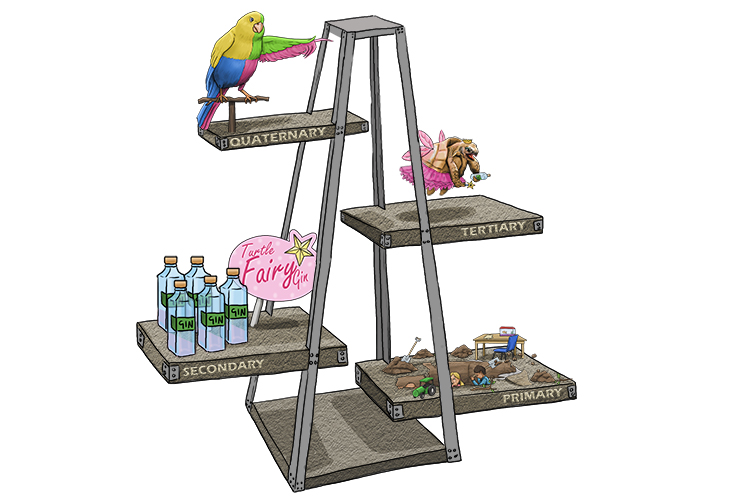Industrial Structure – The relative proportion of the workforce employed in different sectors of the economy
The different sectors are primary, secondary, tertiary and quaternary economies (each is described later in this section.)
To remember the meaning of the term Industrial Structure, use the following mnemonic:
An industrial structure was built and it had four platforms built on it: the primary, secondary, tertiary and quaternary economies.

Basically, industry is divided into four sectors. The primary sector is concerned with the sourcing and production of raw materials; the secondary sector uses the raw materials to make things; the tertiary sector is all about providing services like healthcare, selling, hospitality and leisure; and the quaternary sector covers knowledge, for example education, training, research and IT.
It is important to have the right proportions of people able to work in each of these sectors, and this is called having an industrial structure.
Measures to attract people into a particular sector are often taken by governments who might find, for instance, that there is a shortage of healthcare staff or teachers.
Getting the right balance between sectors is important. For instance, a country with huge manufacturing capacity that cannot obtain sufficient raw materials is likely to have major economic problems, including high unemployment in the manufacturing sector.




